Neolithic Revolution
From Wikipedia, the free encyclopedia
This article is about the introduction of agriculture during the Stone Age. For later historical breakthroughs in agriculture, see agricultural revolution (disambiguation).
The Neolithic Revolution or Neolithic Demographic Transition, sometimes called the Agricultural Revolution, was the wide-scale transition of many human cultures from a lifestyle of hunting and gathering to one of agriculture and settlement, allowing the ability to support an increasingly large population.[1] Archaeological data indicates that the domestication of various types of plants and animals evolved in separate locations worldwide, starting in the geological epoch of the Holocene[2] around 12,000 years ago.[3] It was the world's first historically verifiable revolution in agriculture.
However, the Neolithic Revolution involved far more than the adoption of a limited set of food-producing techniques. During the next millennia it would transform the small and mobile groups of hunter-gatherers that had hitherto dominated human pre-history into sedentary (here meaning non-nomadic) societies based in built-up villages and towns. These societies radically modified their natural environment by means of specialized food-crop cultivation (e.g., irrigation and deforestation) which allowed extensive surplus food production. These developments provided the basis for densely populated settlements, specialization anddivision of labour, trading economies, the development of non-portable art and architecture, centralized administrations and political structures, hierarchical ideologies, depersonalized systems of knowledge (e.g.,writing), and property ownership. The first full-blown manifestation of the entire Neolithic complex is seen in the Middle Eastern Sumerian cities (c. 5,500 BP), whose emergence also inaugurates the end of the prehistoric Neolithic period.[citation needed]
The relationship of the above-mentioned Neolithic characteristics to the onset of agriculture, their sequence of emergence, and empirical relation to each other at various Neolithic sites remains the subject of academic debate, and seems to vary from place to place, rather than being the outcome of universal laws of social evolution.[4][5]
Contents
[hide]Agricultural transition[edit]
The term Neolithic Revolution was coined in 1923 by V. Gordon Childe to describe the first in a series of agricultural revolutions in Middle Eastern history. The period is described as a "revolution" to denote its importance, and the great significance and degree of change affecting the communities in which new agricultural practices were gradually adopted and refined.
The beginning of this process in different regions has been dated from 10,000 to 8,000 BC in the Fertile Crescent[3][7] and perhaps 8000 BC in the Kuk Early Agricultural Site of Melanesia[8][9] to 2500 BC in Subsaharan Africa, with some[who?] considering the developments[clarification needed] of 9000–7000 BC in the Fertile Crescent to be the most important. This transition everywhere seems associated with a change from a largely nomadic hunter-gatherer way of life to a more settled, agrarian-based one, with the inception of thedomestication of various plant and animal species—depending on the species locally available, and probably also influenced by local culture. Recent archaeological research suggests that in some regions such as the Southeast Asian peninsula, the transition from hunter-gatherer to agriculturalist was not linear, but region-specific.[10]
There are several competing (but not mutually exclusive) theories as to the factors that drove populations to take up agriculture. The most prominent of these are:
- The Oasis Theory, originally proposed by Raphael Pumpelly in 1908, popularized by V. Gordon Childe in 1928 and summarised in Childe's book Man Makes Himself.[11] This theory maintains that as the climate got drier due to the Atlantic depressions shifting northward, communities contracted to oases where they were forced into close association with animals, which were then domesticated together with planting of seeds. However, today this theory has little support amongst archaeologists because subsequent climate data suggests that the region was getting wetter rather than drier.[12]
- The Hilly Flanks hypothesis, proposed by Robert Braidwood in 1948, suggests that agriculture began in the hilly flanks of the Taurus and Zagros mountains, where the climate was not drier as Childe had believed, and fertile land supported a variety of plants and animals amenable to domestication.[13]
- The Feasting model by Brian Hayden[14] suggests that agriculture was driven by ostentatious displays of power, such as giving feasts, to exert dominance. This required assembling large quantities of food, which drove agricultural technology.
- The Demographic theories proposed by Carl Sauer[15] and adapted by Lewis Binford[16] and Kent Flannery posit an increasingly sedentary population that expanded up to the carrying capacity of the local environment and required more food than could be gathered. Various social and economic factors helped drive the need for food.
- The evolutionary/intentionality theory, developed by David Rindos[17] and others, views agriculture as an evolutionary adaptation of plants and humans. Starting with domestication by protection of wild plants, it led to specialization of location and then full-fledged domestication.
- Peter Richerson, Robert Boyd, and Robert Bettinger[18] make a case for the development of agriculture coinciding with an increasingly stable climate at the beginning of the Holocene. Ronald Wright's book and Massey Lecture Series A Short History of Progress[19] popularized this hypothesis.
- The postulated Younger Dryas impact event, claimed to be in part responsible for megafauna extinction and ending the last glacial period, could have provided circumstances that required the evolution of agricultural societies for humanity to survive.[20] The agrarian revolution itself is a reflection of typical overpopulation by certain species following initial events during extinction eras; this overpopulation itself ultimately propagates the extinction event.
- Leonid Grinin argues that whatever plants were cultivated, the independent invention of agriculture always took place in special natural environments (e.g., South-East Asia). It is supposed that the cultivation of cereals started somewhere in the Near East: in the hills of Palestine or Egypt. So Grinin dates the beginning of the agricultural revolution within the interval 12,000 to 9,000 BP, though in some cases the first cultivated plants or domesticated animals' bones are even of a more ancient age of 14–15 thousand years ago.[21]
- Andrew Moore suggested that the Neolithic Revolution originated over long periods of development in the Levant, possibly beginning during the Epipaleolithic. In "A Reassessment of the Neolithic Revolution",Frank Hole further expanded the relationship between plant and animal domestication. He suggested the events could have occurred independently over different periods of time, in as yet unexplored locations. He noted that no transition site had been found documenting the shift from what he termed immediate and delayed return social systems. He noted that the full range of domesticated animals (goats, sheep,cattle and pigs) were not found until the sixth millennium at Tell Ramad. Hole concluded that "close attention should be paid in future investigations to the western margins of the Euphrates basin, perhaps as far south as the Arabian Peninsula, especially where wadis carrying Pleistocene rainfall runoff flowed."[22]
Domestication of plants[edit]
Once agriculture started gaining momentum, human activity resulted in the selective breeding of cereal grasses (beginning with emmer, einkorn and barley), and not simply of those that would favour greater caloric returns through larger seeds. Plants that possessed traits such as small seeds or bitter taste would have been seen as undesirable. Plants that rapidly shed their seeds on maturity tended not to be gathered at harvest, therefore not stored and not seeded the following season; years of harvesting selected for strains that retained their edible seeds longer.
Several plant species, the "pioneer crops" or Neolithic founder crops were named by Daniel Zohary, who highlighted importance of the three cereals, and suggesting domestication of flax, pea, chickpea, bitter vetch and lentil came a little later. Based on analysis of the genes of domesticated plants, he preferred theories of a single, or at most a very small number of domestication events for each taxa that spread in an arc from the Levantine corridor around the fertile crescent and later into Europe.[23][24]Gordon Hillman and Stuart Davies carried out experiments with wild wheat varieties to show that the process of domestication would have happened over a relatively short period of between twenty and two hundred years.[25] Some of these pioneering attempts failed at first and crops were abandoned, sometimes to be taken up again and successfully domesticated thousands of years later: rye, tried and abandoned in Neolithic Anatolia, made its way to Europe as weed seeds and was successfully domesticated in Europe, thousands of years after the earliest agriculture.[26] Wild lentils present a different challenge that needed to be overcome: most of the wild seeds do not germinate in the first year; the first evidence of lentil domestication, breaking dormancy in their first year, was found in the early Neolithic at Jerf el Ahmar (in modern Syria), and quickly spread south to the Netiv HaGdud site in the Jordan Valley.[26] This process ofdomestication allowed the founder crops to adapt and eventually become larger, more easily harvested, more dependable in storage and more useful to the human population
Selectively propagated figs, wild barley and wild oats were cultivated at the early Neolithic site of Gilgal I, where in 2006[27] archaeologists found caches of seeds of each in quantities too large to be accounted for even by intensive gathering, at strata datable c. 11,000 years ago. Some of the plants tried and then abandoned during the Neolithic period in the Ancient Near East, at sites like Gilgal, were later successfully domesticated in other parts of the world.
Once early farmers perfected their agricultural techniques like irrigation, their crops would yield surpluses that needed storage. Most hunter gatherers could not easily store food for long due to their migratory lifestyle, whereas those with a sedentary dwelling could store their surplus grain. Eventually granaries were developed that allowed villages to store their seeds longer. So with more food, the population expanded and communities developed specialized workers and more advanced tools.
The process was not as linear as was once thought, but a more complicated effort, which was undertaken by different human populations in different regions in many different ways.
Agriculture in the Fertile Crescent[edit]
Early agriculture is believed to have originated and become widespread in Southwest Asia around 10,000–9,000 BP, though earlier individual sites have been identified. The Fertile Crescent region of Southwest Asia is the centre of domestication for three cereals (einkorn wheat, emmer wheat and barley) four legumes (lentil, pea, bitter vetch and chickpea) and flax.[28] The Mediterranean climate consists of a long dry season with a short period of rain, which may have favored small plants with large seeds, like wheat and barley.[citation needed] The Fertile Crescent also had a large area of varied geographical settings and altitudes and this variety may have made agriculture more profitable for former hunter-gatherers in this region in comparison with other areas with a similar climate .[citation needed]
Finds of large quantities of seeds and a grinding stone at the paleolithic site of Ohalo II in the vicinity of the Sea of Galilee, dated to around 19,400 BP has shown some of the earliest evidence for advanced planning of plant food consumption and suggests that humans at Ohalo II processed the grain before consumption.[29][30] Tell Aswad is oldest site of agriculture with domesticated emmer wheat dated by Willem van Zeist and his assistant Johanna Bakker-Heeres to 8800 BC.[31][32] Soon after came hulled, two-row barley found domesticated earliest at Jericho in the Jordan valley and Iraq ed-Dubb in Jordan.[33] Other sites in the Levantine corridor that show the first evidence of agriculture include Wadi Faynan 16 and Netiv Hagdud.[3] Jacques Cauvin noted that the settlers of Aswad did not domesticate on site, but "arrived, perhaps from the neighbouring Anti-Lebanon, already equipped with the seed for planting".[34] The Heavy Neolithic Qaraoun culture has been identified at around fifty sites in Lebanon around the source springs of the River Jordan, however the dating of the culture has never been reliably determined.[35][36]
Agriculture in China[edit]
Northern China appears to have been the domestication center for foxtail millet (Setaria italica) and broomcorn millet (Panicum miliaceum) with evidence of domestication of these species approximately 8,000 years ago.[37] These species were subsequently widely cultivated in the Yellow River basin (7,500 years ago).[37] Rice was domesticated in southern China later on.[37] Soybean was domesticated in northern China 5000 years ago.[38] Orange and peach also originated in China. They were cultivated around 2500 BC.[39][40]
Agriculture in Africa[edit]
The Revolution developed independently in different parts of the world, not just in the Fertile Crescent. On the African continent, three areas have been identified as independently developing agriculture: the Ethiopian highlands, the Sahel and West Africa.[41]
The most famous crop domesticated in the Ethiopian highlands is coffee. In addition, khat, ensete, noog, teff and finger millet were also domesticated in the Ethiopian highlands. Crops domesticated in the Sahel region include sorghum and pearl millet. The kola nut, extracts from which became an ingredient in Coca Cola, was first domesticated in West Africa. Other crops domesticated in West Africa include African rice, yams and the oil palm.[41]
A number of crops that have been cultivated in Africa for millennia came after their domestication elsewhere. Agriculture in the Nile River Valley developed from crops domesticated in the Fertile Crescent. Bananas and plantains, which were first domesticated in Southeast Asia, most likely Papua New Guinea, were re-domesticated in Africa possibly as early as 5,000 years ago. Asian yams and taro were also cultivated in Africa.[41]
Many grinding stones are found with the early Egyptian Sebilian and Mechian cultures and evidence has been found of a neolithic domesticated crop-based economy dating around 7,000 BP.[42] Philip E. L. Smith[43] writes: "With the benefit of hindsight we can now see that many Late Paleolithic peoples in the Old World were poised on the brink of plant cultivation and animal husbandry as an alternative to the hunter-gatherer's way of life". Unlike the Middle East, this evidence appears as a "false dawn" to agriculture, as the sites were later abandoned, and permanent farming then was delayed until 6,500 BP with the Tasian and Badarian cultures and the arrival of crops and animals from the Near East.
Agriculture in the Americas[edit]
Corn, beans and squash were among the earliest crops domesticated in Mesoamerica, with maize beginning about 7500 BC, squash, as early as 8000 to 6000 BC and beans by no later than 4000 BC. Potatoes andmanioc were domesticated in South America. In what is now the eastern United States, Native Americans domesticated sunflower, sumpweed and goosefoot around 2500 BC. At Guilá Naquitz cave in the Mexicanhighlands, fragments of maize pollen, bottle gourd and pepo squash were recovered and variously dated between 8000 to 7000 BC. In this area of the world people relied on hunting and gathering for several millennia to come. Sedentary village life based on farming did not develop until the second millennium BC, referred to as the formative period.[3]
Agriculture in Papua New Guinea[edit]
Evidence of drainage ditches at Kuk Swamp on the borders of the Western and Southern Highlands of Papua New Guinea shows evidence of the cultivation of taro and a variety of other crops, dating back to 11,000 BP. Two potentially significant economic species, taro (Colocasia esculenta) and yam (Dioscorea sp.), have been identified dating at least to 10,200 calibrated years before present (cal BP). Further evidence ofbananas and sugarcane dates to 6,950 to 6,440 BP. This was at the altitudinal limits of these crops, and it has been suggested that cultivation in more favourable ranges in the lowlands may have been even earlier.CSIRO has found evidence that taro was introduced into the Solomons for human use, from 28,000 years ago, making taro cultivation the earliest crop in the world.[44][45] It seems to have resulted in the spread of the Trans–New Guinea languages from New Guinea east into the Solomon Islands and west into Timor and adjacent areas of Indonesia. This seems to confirm the theories of Carl Sauer who, in "Agricultural Origins and Dispersals", suggested as early as 1952 that this region was a centre of early agriculture.
Domestication of animals[edit]
Further information: Domestication
When hunter-gathering began to be replaced by sedentary food production it became more profitable to keep animals close at hand. Therefore, it became necessary to bring animals permanently to their settlements, although in many cases there was a distinction between relatively sedentary farmers and nomadic herders. The animals' size, temperament, diet, mating patterns, and life span were factors in the desire and success in domesticating animals. Animals that provided milk, such as cows and goats, offered a source of protein that was renewable and therefore quite valuable. The animal’s ability as a worker (for example ploughing or towing), as well as a food source, also had to be taken into account. Besides being a direct source of food, certain animals could provide leather, wool, hides, and fertilizer. Some of the earliest domesticated animals included dogs (East Asia, about 15,000 years ago),[46] sheep, goats, cows, and pigs.
Domestication of animals in the Middle East[edit]
The Middle East served as the source for many animals that could be domesticated, such as sheep, goats and pigs. This area was also the first region to domesticate thedromedary camel. Henri Fleisch discovered and termed the Shepherd Neolithic flint industry from the Bekaa Valley in Lebanon and suggested that it could have been used by the earliest nomadic shepherds. He dated this industry to the Epipaleolithic or Pre-Pottery Neolithic as it is evidently not Paleolithic, Mesolithic or even Pottery Neolithic.[36][47]The presence of these animals gave the region a large advantage in cultural and economic development. As the climate in the Middle East changed and became drier, many of the farmers were forced to leave, taking their domesticated animals with them. It was this massive emigration from the Middle East that would later help distribute these animals to the rest of Afroeurasia. This emigration was mainly on an east-west axis of similar climates, as crops usually have a narrow optimal climatic range outside of which they cannot grow for reasons of light or rain changes. For instance, wheat does not normally grow in tropical climates, just like tropical crops such as bananas do not grow in colder climates. Some authors, like Jared Diamond, have postulated that this East-West axis is the main reason why plant and animal domestication spread so quickly from theFertile Crescent to the rest of Eurasia and North Africa, while it did not reach through the North-South axis of Africa to reach the Mediterranean climates of South Africa, where temperate crops were successfully imported by ships in the last 500 years.[citation needed] Similarly, the African Zebu of central Africa and the domesticated bovines of the fertile-crescent — separated by the dry sahara desert — were not introduced into each other's region.
Consequence[edit]
Social change[edit]
It has long been taken for granted that the introduction of agriculture had been an unequivocal progress. This is now questioned in view of findings by archaeologists and paleopathologists showing that nutritional standards of Neolithic populations were generally inferior to that of hunter-gatherers, and that their life expectancy may well have been shorter too, in part due to diseases and harder work - hunter-gatherers must have covered their food needs with about 20 hours' work a week, while agriculture required much more and was at least as uncertain. The hunter-gatherers' diet was more varied and balanced than what agriculture later allowed. Average height went down from 5'10" (178 cm) for men and 5'6" (168 cm) for women to 5'5" (165 cm) and 5'1" (155 cm), respectively, and it took until the twentieth century for average human height to come back to the pre-Neolithic Revolution levels.[48] Agriculturalists had more anaemias and vitamin deficiencies, more spinal deformations and more dental pathologies.[49]
From the social viewpoint, the traditional view is that the shift to agricultural food production supported a denser population, which in turn supported larger sedentary communities, the accumulation of goods and tools, and specialization in diverse forms of new labor. The development of larger societies led to the development of different means of decision making and to governmental organization. Food surpluses made possible the development of a social elite who were not otherwise engaged in agriculture, industry or commerce, but dominated their communities by other means and monopolized decision-making.[50] Jared Diamond (in The World Until Yesterday) identifies the availability of milk and/or cereal grains as permitting mothers to raise both an older (e.g. 3 or 4 year old) child and a younger child concurrently, whereas this was not possible previously. The result is that a population can significantly more-rapidly increase its size than would otherwise be the case, resources permitting.
However, recent analyses point out that agriculture also brought about deep social divisions and in particular encouraged inequality between the sexes.[51]
Subsequent revolutions[edit]
Andrew Sherratt has argued that following upon the Neolithic Revolution was a second phase of discovery that he refers to as the secondary products revolution. Animals, it appears, were first domesticated purely as a source of meat.[52] The Secondary Products Revolution occurred when it was recognised that animals also provided a number of other useful products. These included:
- hides and skins (from undomesticated animals)
- manure for soil conditioning (from all domesticated animals)
- wool (from sheep, llamas, alpacas, and Angora goats)
- milk (from goats, cattle, yaks, sheep, horses and camels)
- traction (from oxen, onagers, donkeys, horses, camels and dogs)
- guarding and herding assistance (dogs)
Sherratt argues that this phase in agricultural development enabled humans to make use of the energy possibilities of their animals in new ways, and permitted permanent intensive subsistence farming and crop production, and the opening up of heavier soils for farming. It also made possible nomadic pastoralism in semi arid areas, along the margins of deserts, and eventually led to the domestication of both the dromedaryand Bactrian camel. Overgrazing of these areas, particularly by herds of goats, greatly extended the areal extent of deserts. Living in one spot would have more easily permitted the accrual of personal possessions and an attachment to certain areas of land. From such a position, it is argued, prehistoric people were able to stockpile food to survive lean times and trade unwanted surpluses with others. Once trade and a secure food supply were established, populations could grow, and society would have diversified into food producers and artisans, who could afford to develop their trade by virtue of the free time they enjoyed because of a surplus of food. The artisans, in turn, were able to develop technology such as metal weapons. Such relative complexity would have required some form of social organisation to work efficiently, so it is likely that populations that had such organisation, perhaps such as that provided by religion, were better prepared and more successful. In addition, the denser populations could form and support legions of professional soldiers. Also, during this time property ownership became increasingly important to all people. Ultimately, Childe argued that this growing social complexity, all rooted in the original decision to settle, led to a secondUrban Revolution in which the first cities were built.[citation needed]
Disease[edit]
Throughout the development of sedentary societies, disease spread more rapidly than it had during the time in which hunter-gatherer societies existed. Inadequate sanitary practices and the domestication of animals may explain the rise in deaths and sickness following the Neolithic Revolution, as diseases jumped from the animal to the human population. Some examples of diseases spread from animals to humans are influenza, smallpox, and measles.[53] In concordance with a process of natural selection, the humans who first domesticated the big mammals quickly built up immunities to the diseases as within each generation the individuals with better immunities had better chances of survival. In their approximately 10,000 years of shared proximity with animals, such as cows, Eurasians and Africans became more resistant to those diseases compared with the indigenous populations encountered outside Eurasia and Africa.[54] For instance, the population of most Caribbean and several Pacific Islands have been completely wiped out by diseases. According to the Population history of American indigenous peoples, 90% of the population of certain regions of North and South America were wiped out, perhaps by contact with European trappers, before recorded contact with European explorers or colonists. Some cultures like the Inca Empire did have one big mammal domesticated, the Llama, but the Inca did not drink its milk or live in a closed space with their herds, hence limiting the risk of contagion. According to bioarchaeological research, the effects of agriculture on physical and dental health in Southeast Asian rice farming societies from 4000 to 1500 B.P. was not detrimental to the same extent as in other world regions.[55]
The causal link between the type or lack of agricultural development, disease and colonisation is not supported by colonization in other parts of the world. Disease increased after the establishment of British Colonial rule in Africa and India despite the areas having diseases for which Europeans lacked natural immunity. In India, agriculture developed during the Neolithic period with a wide range of animals domesticated. During colonial rule an estimated 23 million people died from cholera between 1865 and 1949, and millions more died fromplague, malaria, influenza and tuberculosis. In Africa, European colonization was accompanied by great epidemics, including malaria and sleeping sickness and despite parts of colonized Africa having little or no agriculture, Europeans were more susceptible to disease than the Africans. The increase of disease has been attributed to increased mobility of people, increased population density, urbanisation, environmental deterioration and irrigation schemes that helped to spread malaria rather than the development of agriculture.[56]
Technology[edit]
In his book Guns, Germs, and Steel, Jared Diamond argues that Europeans and East Asians benefited from an advantageous geographical location that afforded them a head start in the Neolithic Revolution. Both shared the temperate climate ideal for the first agricultural settings, both were near a number of easily domesticable plant and animal species, and both were safer from attacks of other people than civilizations in the middle part of the Eurasian continent. Being among the first to adopt agriculture and sedentary lifestyles, and neighboring other early agricultural societies with whom they could compete and trade, both Europeans and East Asians were also among the first to benefit from technologies such as firearms and steel swords. In addition, they developed resistances to infectious disease, such as smallpox, due to their close relationship with domesticated animals. Groups of people who had not lived in proximity with other large mammals, such as the Australian Aborigines and American indigenous peoples, were more vulnerable to infection and largely wiped out by diseases.
During and after the Age of Discovery, European explorers, such as the Spanish conquistadors, encountered other groups of people who had never or only recently adopted agriculture.
Archaeogenetics[edit]
The dispersal of Neolithic culture from the Middle East has recently been associated with the distribution of human genetic markers. In Europe, the spread of the Neolithic culture has been associated with distribution of the E1b1b lineages and Haplogroup J that are thought to have arrived in Europe from North Africa and the Near East respectively.[57][58] In Africa, the spread of farming, and notably the Bantu expansion, is associated with the dispersal of Y-chromosome haplogroup E1b1a from West Africa.[57]
Notes and references[edit]
- ^ Jean-Pierre Bocquet-Appel (July 29, 2011). "When the World's Population Took Off: The Springboard of the Neolithic Demographic Transition". Science 333 (6042): 560–561. Bibcode:2011Sci...333..560B.doi:10.1126/science.1208880. PMID 21798934. Retrieved June 10, 2012.
- ^ "International Stratigraphic Chart". International Commission on Stratigraphy. Retrieved 2012-12-06.
- ^ a b c d Graeme Barker (25 March 2009). The Agricultural Revolution in Prehistory: Why did Foragers become Farmers?. Oxford University Press. ISBN 978-0-19-955995-4. Retrieved 15 August 2012.
- ^ "The Slow Birth of Agriculture", Heather Pringle*
- ^ "Wizard Chemi Shanidar", EMuseum, Minnesota State University
- ^ Diamond, J.; Bellwood, P. (2003). "Farmers and Their Languages: The First Expansions". Science 300 (5619): 597–603. Bibcode:2003Sci...300..597D. doi:10.1126/science.1078208. PMID 12714734.
- ^ Thissen, L. 2002. Appendix I, The CANeW 14C databases, Anatolia 10,000-5000 cal. BC. In The Neolithic of Central Anatolia. Internal developments and external relations during the 9th–6th millennia cal BC, Proc. Int. CANeW Round Table, Istanbul 23–24 November 2001, edited by F. Gérard and L. Thissen. Istanbul: Ege Yayınları.
- ^ Denham, Tim P.; Haberle, S. G. et al. (2003). "Origins of Agriculture at Kuk Swamp in the Highlands of New Guinea". Science 301 (5630): 189–193. doi:10.1126/science.1085255. PMID 12817084.
- ^ The Kuk Early Agricultural Site
- ^ Kealhofer, Lisa (2003). "Looking into the gap: land use and the tropical forests of southern Thailand". Asian Perspectives 42 (1): 72–95. doi:10.1353/asi.2003.0022.
- ^ Gordon Childe (1936). Man Makes Himself. Oxford university press.
- ^ Scarre, Chris (2005). "The World Transformed: From Foragers and Farmers to States and Empires" in The Human Past: World Prehistory and the Development of Human Societies (Ed: Chris Scarre). London: Thames and Hudson. Page 188. ISBN 0-500-28531-4
- ^ Charles E. Redman (1978). Rise of Civilization: From Early Hunters to Urban Society in the Ancient Near East. San Francisco: Freeman.
- ^ Hayden, Brian (1992). "Models of Domestication". In Anne Birgitte Gebauer and T. Douglas Price. Transitions to Agriculture in Prehistory. Madison: Prehistory Press. pp. 11–18.
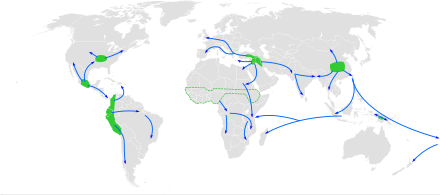
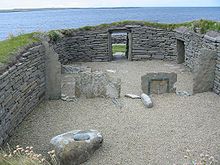
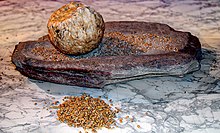
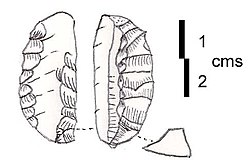
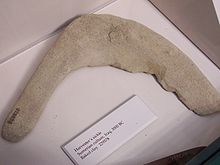

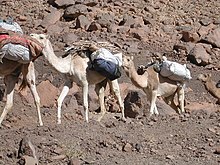
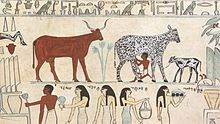

No comments:
Post a Comment